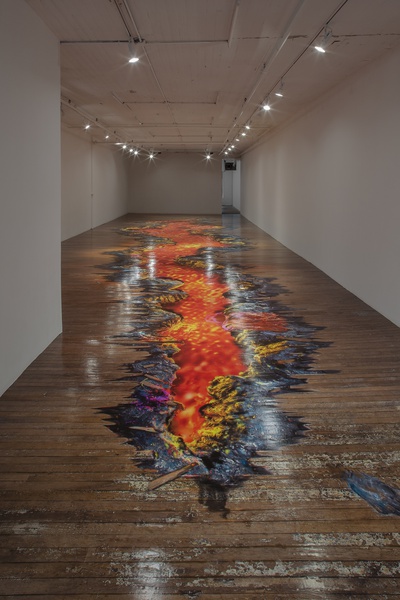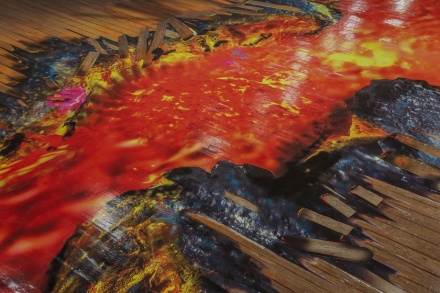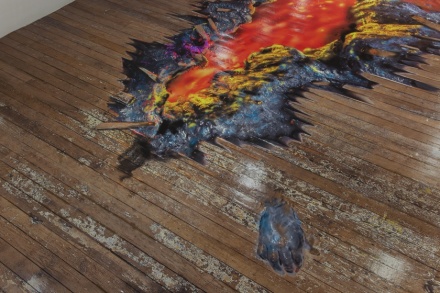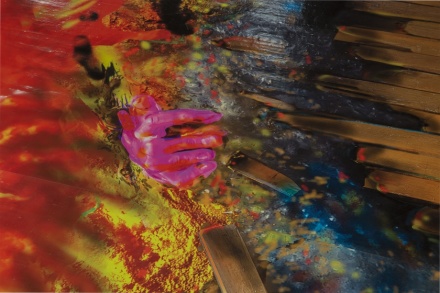
John Russell, Well (2021), via Bridget Donahue
Well, John Russell‘s new exhibition on view through this weekend at Bridget Donahue in New York consists of a single work, an 87 x 22 ft Vinyl print of “Hell,” as the gallery describes it, a sprawling digital collage that twists a range of horrifying graphics and symbols into a teeming mass of spectatorship.

John Russell, Well (2021), via Bridget Donahue
The work cites ample touchstones in the history of early performance: “drawing upon the documentation of Vito Acconci’s sub-floor Seedbed (1972); Carolee Schneemann and David Hammons’ Floor-based Meat Joy (1964) And Bliz-aard Ball Sale (1983) As concerned with gestures of looking down, Or maybe looking up, And John Martin’s saturated spectacles Of religious apocalypse.” It’s an intriguing series of touchstones for a work that really relies mainly on graphic visual stimulus and a reliance on repulsion and dissonance. The ghoulish imagery here, and its allusions to these early works seems to pose the experience of the abject as both subject and material, of the experience of the body and an attendant horror at its interaction with other bodies or with the operations of capital, per se, are here crystallized in a static image.

John Russell, Well (2021), via Bridget Donahue
The piece draws additional clout from its surreal displacement of notions of horizontality and verticality. These orienting vectors are here rendered flat, depth and height transmuted by the work’s flatness. If Russell’s interest is in the experience of “looking down,” his rendering of hell as a flat experience is an intriguing one, placing its visual experience as one divorced from a bodily experience. Pain within art seems to have its limits in this work, the act of looking rendering that abject suffering to a piece as equally flat and imagistic as a painting.

John Russell, Well (2021), via Bridget Donahue
Framing the work within these bounds, Russell seems to ask how we can pursue an empathetic response, or perhaps merely a bodily response, to some of these classic works. Are these works even functional in the context of modernity? How are we to experience Meat Joy today? Framing the historical as a flat plane, Russell makes an intriguing case for how time, and distance, can ultimately reshape experience.
The show closes March 13th
– D. Creahan
Read more:
John Russell: Well [Exhibition Site]



